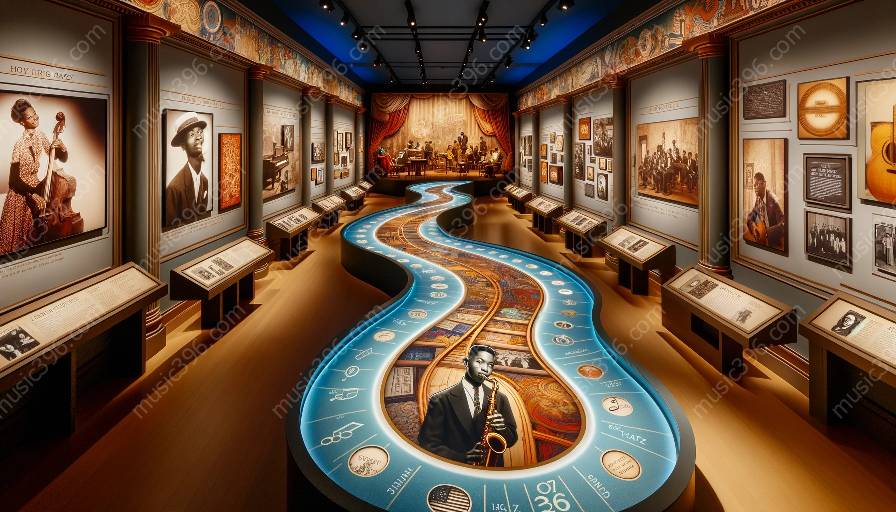Jazz improvisation is a fundamental aspect of the genre that has evolved over the decades, shaping the very essence of jazz music. Understanding the key elements of jazz improvisation and its evolution is crucial to gaining insights into the development of jazz and its impact on jazz studies.
The Key Elements of Jazz Improvisation
Jazz improvisation encompasses several key elements that contribute to its unique and expressive nature:
- Musical Techniques: Jazz improvisation involves a wide array of musical techniques such as chord changes, scales, and rhythmic patterns that allow musicians to create spontaneous melodies and harmonies.
- Expression and Emotion: Improvisation in jazz is deeply rooted in expressing emotions and individuality, allowing musicians to convey their feelings through their playing.
- Call and Response: This interactive element is often present in jazz improvisation, where musicians engage in musical dialogue, echoing and responding to each other's phrases.
- Improvisational Vocabulary: Jazz musicians develop a rich vocabulary of melodic, harmonic, and rhythmic ideas over time, drawing from the history of the genre and incorporating their own innovations.
The Evolution of Jazz Improvisation
Jazz improvisation has continuously evolved, adapting to cultural, social, and technological changes over the decades.
Early Years and New Orleans Jazz
In the early years of jazz, improvisation was an integral part of the music, particularly in the context of New Orleans jazz. Musicians would collectively improvise over simple harmonic structures and melodies, laying the groundwork for future developments in jazz improvisation.
Swing Era and Bebop
The swing era saw the emergence of solo improvisation as a prominent feature, with jazz legends such as Louis Armstrong and Duke Ellington pioneering innovative improvisational techniques. The advent of bebop further revolutionized jazz improvisation, emphasizing intricate harmonic improvisation and virtuosic soloing.
Modal and Free Jazz
The modal jazz movement, spearheaded by artists like Miles Davis, introduced a shift towards improvisation based on scales and modes, diverging from traditional chord progressions. This led to a more open and exploratory approach to improvisation, eventually paving the way for free jazz, where musicians pushed the boundaries of improvisation with avant-garde techniques.
Fusion and Contemporary Jazz
In the latter part of the 20th century and beyond, jazz improvisation evolved through fusion with other musical genres, incorporating elements of rock, funk, and electronic music. This fusion gave rise to a diverse range of improvisational approaches in contemporary jazz, encompassing influences from world music and beyond.
Impact on the Evolution of Jazz
Jazz improvisation has had a profound impact on the evolution of the genre, driving innovation, experimentation, and creative expression. This evolution has in turn influenced the study of jazz, shaping pedagogical approaches and academic research in jazz studies.
Development of Jazz Education
The evolution of jazz improvisation has prompted the development of specialized jazz education programs and institutions, providing aspiring musicians with the tools and knowledge to master the art of improvisation. From traditional jazz conservatories to contemporary music schools, the study of jazz improvisation continues to be a vital component of music education.
Academic Research and Analysis
Jazz improvisation serves as a rich subject of academic research, with scholars exploring its historical significance, cultural context, and theoretical underpinnings. Analytical studies of improvisational techniques and stylistic developments contribute to a deeper understanding of jazz music and its evolution.
Continued Innovation and Creativity
The evolution of jazz improvisation has fueled a culture of continued innovation and creativity, inspiring musicians to push the boundaries of improvisation and expand the sonic possibilities of jazz. This ongoing creativity perpetuates the evolution of jazz, ensuring its relevance and vitality in contemporary musical landscapes.
Conclusion
Jazz improvisation stands as a dynamic and evolving art form, encompassing a rich tapestry of elements that have shaped the course of jazz music over the decades. Understanding the key elements of jazz improvisation and its evolution provides valuable insights into the profound impact of improvisation on the evolution of jazz and its enduring influence on jazz studies.





























